#jerome weidman
Explore tagged Tumblr posts
Video
1950 illustration by Joan Martin May by totallymystified Via Flickr: For the story A Simple Act Of Justice by Jerome Weidman. From Good Housekeeping magazine.
#Joan Martin May#artist illustrator#illustration#A Simple Act Of Justice#Jerome Weidman#story fiction#writer#author#1950#1950s#50s#fifties#Good Housekeeping#magazine#flickr
3 notes
·
View notes
Text
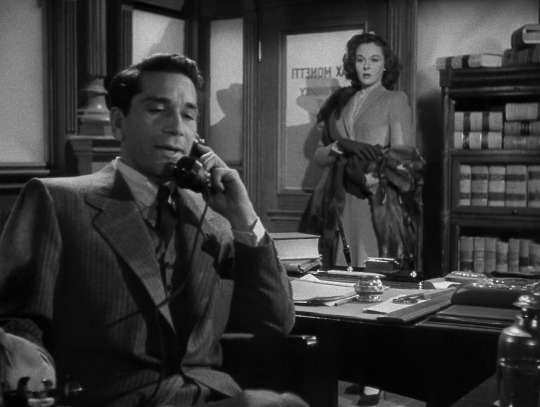

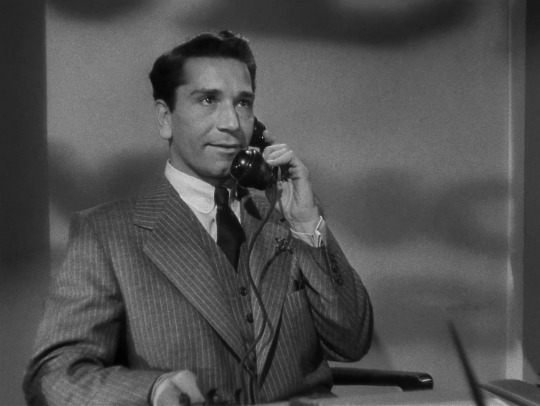



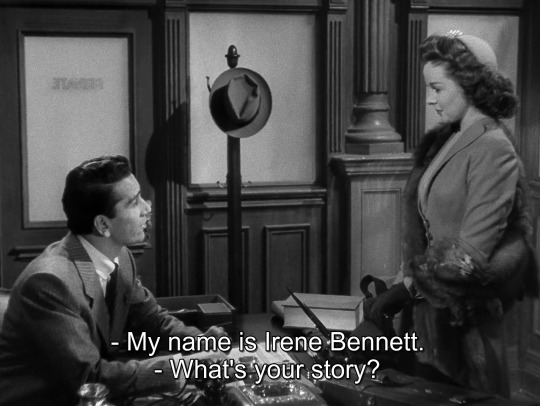


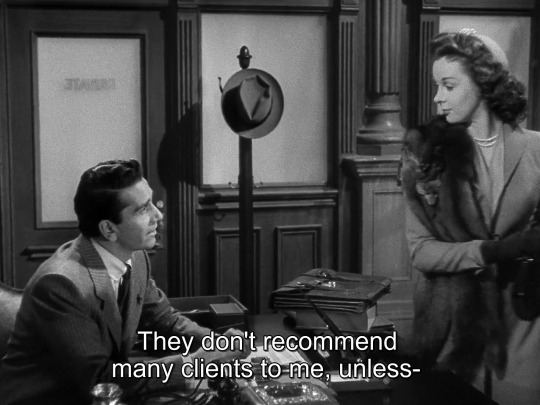
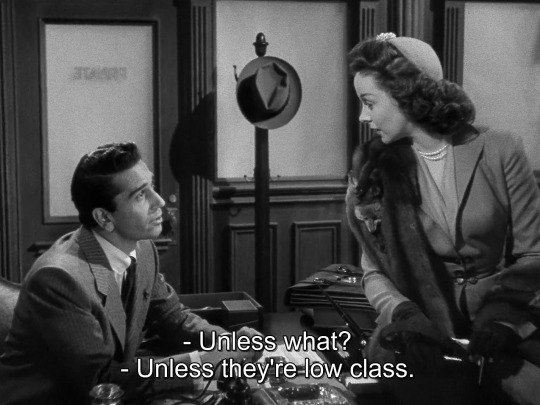
House of Strangers (1949).
#house of strangers#house of strangers (1949#joseph l. mankiewicz#richard conte#susan hayward#milton r. krasner#harmon jones#lyle wheeler#george w. davis#thomas little#walter m. scott#philip yordan#jerome weidman
11 notes
·
View notes
Note
what's your favourite fictional leopold and loeb retelling? Book/movie/musical/anything!
Thank you for your question!
Ooo that's a tricky one, there's so many possibilities!
As far as my favorites objectively, which I think I'd like even if I didn't know the Leopold-Loeb story, I'd say Funny Games (1997), Rope (1948) and Scream (1996), none of which are really about Leopold and Loeb at all, haha.
But for the ones that really adapt the story/characters I'd say Never the Sinner by John Logan, Little Brother Fate: The Cold and the Dark by Mary Carter-Roberts, Nothing But the Night by James Yaffe, The Hunting Accident by Landis Blair and David Carlson, Compulsion (1959) and the Laural Meade play trilogy
I think These Violent Delights by Micah Nemerever is really good but man is it depressing in Paul's POV for so many pages, so I don't really reach for it a lot.
Shout outs to The Nice Boys by Isabel Colegate and The Death of Dickie Draper by Jerome Weidman too!
18 notes
·
View notes
Note
Could you give your top 3 favorite and top 3 least favorite adaptations of the Leopold-Loeb story?
Based off of nothing but my entertainment from them:
Favorite
1. The Death of Dickie Draper by Jerome Weidman
2. Nothing but the Night by James Yaffe
3. Rope (1948)
Least Favorite (Soooooo many could fit in this category…so many)
1. Ashes on the Wind by Brandy Purdy
2. Semblance of Balance
3. Thrill Me
#asks#i feel like my ranking for adaptation would change based off the criteria#like i wouldnt recommend dickie Draper for accuracy but god damn i love it#l&l
2 notes
·
View notes
Text
One of those asks games: tagged by @hobgoblinns
three ships: I don’t have favourites, so today let’s go with........ Baru Cormorant x Tain Hu, Elias Bouchard x Peter Lukas and ...... y’know what, to be spicy, I’m actually gonna say here Judas x Annas
first ever ship: Earliest official memory of a ship would be Tenth Doctor x Simms!Master
last song listened to: Does it count as a song if I was watching too? Weidman performed by Jerome Pradon <3 I love him so much. I am probably the #2 biggest Jerome Pradon fan active on tumblr. Please come to me if you have or want recs/links/files with his stuff. https://www.youtube.com/watch?v=4_CQ-DFRCws&list=PLBAZGfvgRIaYn3nMZQyRHqaNvCvcjbaeJ
last movie watched: Pride and Prejudice
currently reading: Thief of Time from Pterry’s Discworld
currently watching: Making roommate watch The Gay and Wondrous Life of Caleb Gallo
currently consuming: old men
currently craving: Cough syrup for a 15 hour nap I shall be tagging @hematiterings @goldshitter @this-is-a-name-dont-worry @peach0cake @tophatandboots and @purple-confusion
2 notes
·
View notes
Text
Susan Hayward as Harriet Boyd in I Can Get It For You Wholesale (1951, 20th Century Fox)
In the late 1940s 20th Century-Fox was going a through a transition. Many of their stars' contracts were ending and many were leaving the studio. Darryl F. Zanuck was interested in signing Susan Hayward to a contract because she had two qualities he desired in any actress: "she has beauty and she can act." I Can Get It For You Wholesale was directed by Michael Gordon. The screenplay was by Abraham Polonsky which was based on Vera Caspary's loose adaptation of the 1937 novel of the same title by Jerome Weidman. There was one major change from the novel to the film: the main character originally in the novel was named Harry Bogen, for the film the main character now is female and her name is Harriet Boyd. Harriet Boyd (Susan Hayward) is a model with a burning ambition to be a dress designer and of course, being Susan Hayward, she is going to let nothing stand in her determined way. Shortly after the film was released, screenwriter Abraham Polonsky was called to testify before the House Un-American Activities Committee. Although he refused to deny or confirm affiliation with the Communist Party, he found himself blacklisted. He continued to write under pseudonyms, but it was not until Madigan in 1968 that he received screen credit under his own name. Unfortunately, director Michael Gordon also fell prey to the paranoia-driven blacklisting of the era and did not return to feature films until the end of the decade. When he did come back, it was with one of his most popular and well-remembered efforts, "Pillow Talk" (1959), starring Doris Day and Rock Hudson. Gordon followed this enjoyable sex farce with other equally successful sex comedies, including "Boys' Night Out" (1962), "Move Over, Darling" (1963) and "A Very Special Favor" (1965). His career as a director ended around 1970, but he later came back as a member of UCLA's theater arts faculty. The technical competence and smooth, intelligent control of Gordon's best films, though, made one wish that his professional peak had not been so abruptly interrupted. Hayward is really a pleasure to watch because her acting is so intense and yet so natural. She is at times an unlikable character, but we understand who and why she is what she is, and though her personality is strong, the only time she appears histrionic is when she’s obviously faking it to hatch a plot. Her only tender relationship appears to be with Sam Jaffe. All in all, this 90-minute character study is an entertaining look inside the garment industry that I suspect is still relevant.

502 notes
·
View notes
Photo

1950 illustration by Joan Martin May
For the story A Simple Act Of Justice by Jerome Weidman. From Good Housekeeping magazine
#Joan Martin May#illustration#vintage#magazine#story#1950#A Simple Act Of Justice#Jerome Weidman#Good Housekeeping
51 notes
·
View notes
Photo

Bell Book and Candle (1958) by Richard Quine
Book title: The Enemy Camp (1958) by Jerome Weidman
6 notes
·
View notes
Photo

A Simple Act of Justice by Jerome Weidman Good Housekeeping, 1950 Illustration by Joan Martin May
92 notes
·
View notes
Text
Weekend Edition: Essays, Part 2
We’re back today with more collections of essays. Remember to see our post Here for You to learn how you can access the following materials remotely. Even if you are not on campus, both printed materials and electronic resources are still available to you!

The Good Immigrant: 26 Writers Reflect on America edited by Nikesh Shukla and Chimene Suleyman
Presents essays by first- and second-generation immigrant writers on the realities of immigration, multiculturalism, and marginalization in an increasingly divided America. From Trump's proposed border wall and travel ban to the marching of White Supremacists in Charlottesville, America is consumed by tensions over immigration and the question of which bodies are welcome. In this much-anticipated follow-up to the bestselling UK edition, hailed by Zadie Smith as "lively and vital," editors Nikesh Shukla and Chimene Suleyman hand the microphone to an incredible range of writers whose humanity and right to be here is under attack. Chigozie Obioma unpacks an Igbo proverb that helped him navigate his journey to America from Nigeria. Jenny Zhang analyzes cultural appropriation in 90s fashion, recalling her own pain and confusion as a teenager trying to fit in. Fatimah Asghar describes the flood of memory and emotion triggered by an encounter with an Uber driver from Kashmir. Alexander Chee writes of a visit to Korea that changed his relationship to his heritage. These writers, and the many others in this singular collection, share powerful personal stories of living between cultures and languages while struggling to figure out who they are and where they belong. By turns heartbreaking and hilarious, troubling and uplifting, the essays in The Good Immigrant come together to create a provocative, conversation-sparking, multivocal portrait of America now.
Appalachian Reckoning: A Region Responds to Hillbilly Elegy edited by Anthony Harkins and Meredith McCarroll "With hundreds of thousands of copies sold, a Ron Howard movie in the works, and the rise of its author as a media personality, J.D. Vance's Hillbilly Elegy: A Memoir of a Family and Culture in Crisis has defined Appalachia for much of the nation. What about Hillbilly Elegy accounts for this explosion of interest during this period of political turmoil? Why have its ideas raised so much controversy? And how can debates about the book catalyze new, more inclusive political agendas for the region's future? Appalachian Reckoning is a retort, at turns rigorous, critical, angry, and hopeful, to the long shadow Hillbilly Elegy has cast over the region and its imagining. But it also moves beyond Hillbilly Elegy to allow Appalachians from varied backgrounds to tell their own diverse and complex stories through an imaginative blend of scholarship, prose, poetry, and photography. The essays and creative work collected in Appalachian Reckoning provide a deeply personal portrait of a place that is at once culturally rich and economically distressed, unique and typically American. Complicating simplistic visions that associate the region almost exclusively with death and decay, Appalachian Reckoning makes clear Appalachia's intellectual vitality, spiritual richness, and progressive possibilities."--Back cover
Victorian Comedy and Laughter: Conviviality, Jokes and Dissent edited by Louise Lee This innovative collection of essays is the first to situate comedy and laughter as central rather than peripheral to nineteenth century life. Victorian Comedy and Laughter: Conviviality, Jokes and Dissent offers new readings of the works of Charles Dickens, Edward Lear, George Eliot, George Gissing, Barry Pain and Oscar Wilde, alongside discussions of much-loved Victorian comics like Little Tich, Jenny Hill, Bessie Bellwood and Thomas Lawrence. Tracing three consecutive and interlocking moods in the period, all of the contributors engage with the crucial critical question of how laughter and comedy shaped Victorian subjectivity and aesthetic form. Malcolm Andrews, Jonathan Buckmaster and Peter Swaab explore the dream of print culture togetherness that is conviviality, while Bob Nicholson, Louise Lee, Ann Featherstone, Louise Wingrove and Oliver Double discuss the rise-on-rise of the Victorian joke -- both on the page and the stage -- while Peter Jones, Jonathan Wild and Matthew Kaiser consider the impassioned debates concerning old and new forms of laughter that took place at the end of the century.
Why I Like This Story edited by Jackson R. Bryer
On the assumption that John Updike was correct when he asserted, in a 1978 letter to Joyce Carol Oates, that "Nobody can read like a writer," Why I Like This Story presents brief essays by forty-eight leading American writers on their favorite American short stories, explaining why they like them. The essays, which are personal, not scholarly, not only tell us much about the story selected, they also tell us a good deal about the author of the essay, about what elements of fiction he or she values. Among the writers whose stories are discussed are such American masters as James, Melville, Hemingway, O'Connor, Fitzgerald, Porter, Carver, Wright, Updike, Bellow, Salinger, Malamud, and Welty; but the book also includes pieces on stories by canonical but lesser-known practitioners such as Andre Dubus, Ellen Glasgow, Kay Boyle, Delmore Schwartz, George Garrett, Elizabeth Tallent, William Goyen, Jerome Weidman, Peter Matthiessen, Grace Paley, William H. Gass, and Jamaica Kincaid, and relative newcomers such as Lorrie Moore, Kirstin Valdez Quade, Phil Klay, Viet Thanh Nguyen, and Edward P. Jones. Why I Like This Story will send readers to the library or bookstore to read or re-read the stories selected. Among the contributors to the book are Julia Alvarez, Andrea Barrett, Richard Bausch, Ann Beattie, Andre Dubus, George Garrett, William H. Gass, Julia Glass, Doris Grumbach, Jane Hamilton, Jill McCorkle, Alice McDermott, Clarence Major, Howard Norman, Annie Proulx, Joan Silber, Elizabeth Spencer, and Mako Yoshikawa. Editor Jackson R. Bryer is Professor Emeritus of English at the University of Maryland.
7 notes
·
View notes
Video
1966 illustration by Brian Saunders by totallymystified Via Flickr: For the story The City Of Light by Jerome Weidman. From Homes And Gardens.
#Brian Sanders#artist#illustrator#illustration#Jerome Weidman#author#writer#story#fiction#The City Of Light#retro#vintage#nostalgia#Homes And Gardens#magazine#flickr
0 notes
Text
Fiorello!

Fiorello! Book by Jerome Weidman and George Abbott, music by Jerry Bock, lyrics by Sheldon Harnick, directed by George Abbott (replacing Arthur Penn), choreography by Peter Gennaro. Opened Nov. 23, 1959; closed Oct. 28, 1961 (796 performances)
Fiorello La Guardia Tom Bosley Ben Marino Howard da Silva Floyd Mark Dawson Morris Nathaniel Frey Thea Ellen Hanley Dora Pat Stanley Marie Patricia Wilson Mitzi Travers Eileen Rodgers Derby/Dancer/1st Heckler Bob Bernard Singer/Mr. Zappatella David Collyer Senator Frederic Downs Politician/Mr. Lopez H.F. Green Neil Bob Holiday Commissioner/3rd Player Michael Quinn Singer/Announcer/Ed Peterson Del Horstmann Singer/Florence Deedy Irwin Mrs. Pomerantz Helen Verbit and ensemble.

The last of the classic musicals of Broadway’s Golden Age, Fiorello! was something new: a musical biography of a political figure. Musicals in the past had generally steered as clear as possible from politics. The two notable exceptions were Of Thee I Sing (1931), which dealt with politics but not issues, let alone reality, and Finian’s Rainbow (1947), which was about issues but not politics. Both were highly praised in their day but have not withstood the test of time, the Gershwin musical because of its supreme silliness and Finian’s Rainbow for reasons having to do with staging problems. But Fiorello! still delights. It has been performed twice by Encores!, including its first-ever show, and revived in regional theaters despite (or perhaps because) of its utter and complete New Yorky-ness.

The show follows legendary Mayor Fiorello La Guardia from his first election to Congress to his second marriage, during his mayorality. Along the way we meet a rich assortment of colorful New York types: Tammany Hall politicians, citizens of every ethnicity (proving that diversity existed in New York long before it became a national byword), chorus girls, city officials, radio announcers, etc.
If the show has a fault, it is that the title character does not dominate the musical. It’s more about LaGuardia’s “life and times” than the man himself. (Tellingly, Tom Bosley won the Tony Award for Best Featured Actor, not Best Actor.) LaGuardia has no major song of his own, and, in fact, doesn’t sing much at all. Fiorello!’s two best-known numbers, “Politics and Poker” and “A Little Tin Box” are both affectionate sendups of the kind of crooked politicians whom LaGuardia made it his mission to destroy. The latter song, especially, still resonates today. As in most Bock & Harnick shows, the songs are so tightly knit into the libretto that extracting one to make a stand-alone hit is difficult. Nevertheless, “When Did I Fall in Love” has managed to become a standard.

John Chapman in the Daily News captured the show’s spirit when he wrote, “Not since Guys and Dolls (1950) has there been a musical as down-to-the-sidewalks New York as Fiorello! is. Not since Of Thee I Sing (1931) has there been a musical which achieves the sophisticated but cheerful attitude towards politics that Fiorello! does. La Guardia is being played with almost incredible realism by Tom Bosley [then an unknown actor], a man who has managed to learn about the theater without ever having been on Broadway before. Bosley looks like La Guardia, sounds like him, waggles his head like him, scurries like him, and explodes like him. After the reception he got at the theater last evening, I think he could be elected mayor even on a Confusion ticket. Yet he is no mere impersonator; he is a good actor.”
7 notes
·
View notes
Text
EUR/USD may fall under ECB President Christine Lagarde
European leaders have been struggling to divvy up the top jobs.
IMF Chief Christine Lagarde is emerging as a potential candidate to lead the ECB.
Her views are dovish and may push EUR/USD to new lows.
European leaders have usually been able to reach compromises – or “euro-fudges” – after long nights in Brussels. This time, divvying up the top jobs in the European Union is taking longer than expected. The central row is over the top position of the President of the European Commission.
The horse-trading between German Chancellor Angela Merkel, French President Emmanuel Macron and their 26 colleagues has already seen various names for all the key positions. For euro traders, the post of President of the European Central Bank is the only game in town.
If the latest reports are to be believed, the Managing Director of the International Monetary Fund (IMF) has been leading the race for the top job. How will Lagarde shape up the ECB?
Lagarde’s ECB
The French politician is significantly dovish. As head of the IMF, she has advocated monetary and fiscal stimulus, calling on both central banks and governments to keep helping the economy.
On June 5th, 2019, Lagarde wrote an article for the IMF’s blog titled “How to help, not hinder global growth” and called for more action. Here is a quote, emphasis mine:
Our expectation was that global economic activity would also benefit from the more patient pace of monetary normalization by the US Fed and the European Central Bank, and from increased fiscal stimulus in China. And indeed, these policy responses have provided vital support over the past few months, including by easing financial conditions and increasing capital flows to emerging markets
Moving from Washington to Frankfurt, Lagarde can practice what she has preached – cut interest rates[1] to deeper levels and resume Quantitative Easing – following in the footsteps of incumbent ECB President Mario Draghi[2].
But will she able to deliver?
Lagarde has significant clout given her experience leading the IMF – including during the worst years of the euro-crisis – and at her previous post as French finance minister. She is well-known and well-respected in both economic and political circles.
The IMF MD is not a trained economist – she studied law, like Fed[3] Chair Jerome Powell[4] – but that should not impede her given her vast experience and clout.
However, she is a politician. And a French one. Northern European states led by Germany may frown upon extraordinary measures that may be required in the span of an eight-year tenure. The divided between northern creditor countries and southern debtor countries – to simplify – may intensify if the economic situation deteriorates.
Lagarde may be torn between the interests of her country and the demands of the German Bundesbank and may struggle to oversee more monetary stimulus without drawing criticism.
While she may have an easy path to resume Quantitative Easing that Draghi has gradually ended and trim negative interest rates further. However, if further steps are needed, Lagarde may have a harder time than Draghi given her political background.
Conclusion
Overall, she may encounter difficulties in doing “whatever it takes” – as Draghi famously said – in a full-blown crisis.
However, in the short and medium term, Lagarde’s nomination to lead the ECB[5] may result in a weaker euro, perhaps sending it to new lows. She is significantly more dovish than most of the other candidates, especially Germany’s Jens Weidman and Finland’s Olli Rehn – the latter overseeing austerity.
Get the 5 most predictable currency pairs[6]
References
^ rates (www.fxstreet.com)
^ Mario Draghi (www.fxstreet.com)
^ Fed (www.fxstreet.com)
^ Jerome Powell (www.fxstreet.com)
^ ECB (www.fxstreet.com)
^ Get the 5 most predictable currency pairs (www.forexcrunch.com)
from Forex Crunch http://feedproxy.google.com/~r/ForexCrunch/~3/Nz3C0fy_nio/
1 note
·
View note
Text
MAUGHAM, W. Somerset
British writer of novels, short stories and plays (1874-1965)
A tireless traveller (especially in the Far East), Maugham wrote hundreds of short stories based on anecdotes he heard or scenes he observed en route. Many of them were later filmed: Rain', for example (about a missionary on a cruise-liner in Samoa struggling to reform a prostitute, and losing his own soul in the process), was made half a dozen times. Maugham's novels used true experience in a similar way, shaping it and drawing out its meaning but keeping close to real events. Liza of Lambeth (1897) is about a Londonslum girl tormented by her neighbours for conceiving a bastard child. Of Human Bondage (1915) is the story of an orphan, bullied at school because he has a club foot, who struggles to find happiness as an adult, is ravaged by love for a worthless woman, and settles at last to become a country doctor. The stockbroker hero of The Moon and Sixpence (1919) gives up career, wife and family to become a painter in the South Seas, as Gauguin did. Cakes and Ale (1930) is an acid satire about the 1930s London literary world; Maugham avoided libel suits only by claiming that every writer it pilloried was just another aspect of himself.
Maugham's other novels include The Trembling of a Leaf, The Casuarina Tree, The Razor's Edge and Catalina. His Complete Short Stories and Collected Plays (from 1907--32 he wrote two dozen successful plays, mainly comedies) were published in the 1950s. A Writer's Notebook and The Summing Up give fascinating insights into the balance between his life and work.
READ ON
To Liza of Lambeth : Emile Zola, The Boozer (L'Assommoir) Arthur Morrison, A Child of the Jago
To Of Human Bondage : C.P. Snow, Strangers and Brothers Jerome Weidman, Fourth Street East
To The Moon and Sixpence : Joyce Cary, The Horse's Mouth
To Cakes and Ale : Rose Macaulay, Crewe Train J.B. Priestley, The Image Men
To the short stories : Guy de Maupassant, Boule de Suif Rudyard Kipling, Wee Willie Winkie R.L. Stevenson, Island Nights' Entertainment Paul Theroux, World's End
more :Tags Pathways Themes & Places
#AUTHORS#MAUGHAM_WS#CARY_Joyce#DE_MAUPASSANT_Guy#KIPLING_Rudyard#MACAULAY_Rose#MORRISON_Arthur#PRIESTLEY_JB#SNOW_CP#STEVENSON_RL#THEROUX_Paul#WEIDMAN_Jerome#ZOLA_Emile
1 note
·
View note
Text
Dollar lower after initial jobless claims data with payrolls on tap

FILE PHOTO: U.S. one dollar banknotes are seen in front of displayed stock graph in this illustration taken February 8, 2021. REUTERS/Dado Ruvic/Illustration/File Photo By Chuck Mikolajczak NEW YORK (Reuters) - The dollar weakened on Thursday following strong labor market data, while the euro remained near a one-month high versus the greenback after European Central Bank policymakers made comments that kept inflation concerns in focus. U.S. weekly initial jobless claims fell last week, and layoffs dropped to their lowest in more than 24 years. Still, rising COVID-19 cases in recent weeks have threatened the economic recovery, keeping the Federal Reserve from pulling back on its massive stimulus. "It was better than expected but it wasn’t enough to change anyone’s views about what is going on, or the pace of tapering or what Friday’s number might be. It was just within the range of estimates," said Marshall Gittler, head of investment research at BDSwiss. On Wednesday, the ADP National Employment Report was much weaker than expected. On Friday, the U.S. government will report on payrolls for August. Nonfarm payrolls are expected to rise by 750,000, with the unemployment rate anticipated to dip to 5.2% from 5.4%, according to Reuters estimates. The dollar has been subdued on uncertainty over Fed policy. Last Friday, Fed chair Jerome Powell said that tapering of its stimulus could begin this year, yet the central bank was in no hurry. "They’ve pretty much nailed their colors to the mast, they said unless all hell breaks loose they are going to start tapering this year, so we would have to see a massive miss or probably several massive misses for them to delay it," said Gittler. Other data showed new orders for U.S.-made goods rose in July, while business spending on equipment remained strong, despite supply constraints and spending trends moving away from goods towards services. The dollar index fell 0.303% at 92.229, after falling as low as 92.219, its lowest level since Aug. 5. The euro was up 0.31% to $1.1874. Other data this week showed inflation rose 3% in the euro zone for August, which helped push the euro to a one-month high of 1.8745, its highest since Aug. 4. On Thursday, data showed manufacturing remained strong in the region but supply chain issues sent prices higher. Recent comments from European Central Bank hawks including Austria's Robert Holzman and Bundesbank boss Jens Weidman also supported the single currency. ECB President Lagarde said the region was recovering from the pandemic and only needed "surgical" support. The ECB is scheduled to hold a policy meeting on Sept. 9. The Japanese yen strengthened 0.04% versus the greenback at 109.96 per dollar. Sterling was last trading at $1.3834, up 0.48%. Among crytpocurrencies, Bitcoin broke the $50,000 mark for the first time since August 23 and last rose 0.98% to $49,333.82. Ethereum last fell 1.5% to $3,774.04 after touching a 3-1/2 month high of $3,837.20 on Wednesday. ======================================================== Currency bid prices at 3:11PM (1911 GMT) Description RIC Last U.S. Close Pct Change YTD Pct High Bid Low Bid Previous Change Session Dollar index 92.2250 92.5090 -0.30% 2.494% +92.5360 +92.2190 Euro/Dollar $1.1874 $1.1840 +0.29% -2.82% +$1.1875 +$1.1834 Dollar/Yen 109.9650 110.0500 -0.07% +6.43% +110.1200 +109.9150 Euro/Yen 130.57 130.26 +0.24% +2.88% +130.5900 +130.1700 Dollar/Swiss 0.9146 0.9158 -0.13% +3.38% +0.9167 +0.9140 Sterling/Dollar $1.3834 $1.3768 +0.50% +1.27% +$1.3839 +$1.3768 Dollar/Canadian 1.2556 1.2618 -0.49% -1.40% +1.2637 +1.2552 Aussie/Dollar $0.7401 $0.7369 +0.45% -3.78% +$0.7409 +$0.7356 Euro/Swiss 1.0860 1.0840 +0.18% +0.49% +1.0864 +1.0834 Euro/Sterling 0.8582 0.8597 -0.17% -3.97% +0.8603 +0.8577 NZ Dollar/Dollar $0.7111 $0.7070 +0.64% -0.91% +$0.7120 +$0.7058 Dollar/Norway 8.6535 8.6990 -0.44% +0.86% +8.7035 +8.6480 Euro/Norway 10.2771 10.2920 -0.14% -1.81% +10.3100 +10.2530 Dollar/Sweden 8.5729 8.5990 -0.15% +4.59% +8.6196 +8.5723 Euro/Sweden 10.1805 10.1957 -0.15% +1.03% +10.2062 +10.1740 Source Read the full article
0 notes
Photo

365 Day Movie Challenge (2019) - #147: House of Strangers (1949) - dir. Joseph L. Mankiewicz
Sandwiched between the back-to-back Oscar-winning films A Letter to Three Wives (1949) and All About Eve (1950) by writer/director Joseph L. Mankiewicz and mistakenly labeled as a noir by some viewers, Twentieth Century Fox’s House of Strangers is a tepid drama that wastes most of its talented actors.
Adapted by Philip Yordan (with uncredited assistance by Mankiewicz) from Jerome Weidman’s novel and told largely in flashback, the story covers the epic saga of Italian-American banker Gino Monetti (Edward G. Robinson) and his sons Max (Richard Conte), Joe (Luther Adler), Pietro (Paul Valentine) and Tony (Efrem Zimbalist Jr.). The Monetti family enterprise caters to immigrants like Gino, who touts himself as a generous businessman but doesn’t mind cutting corners - giving out loans that don’t add up, not making a record of every transaction - whenever it’s possible. When Gino is arrested for his illegal practices, three of his sons abandon him. Only Max, a lawyer shows, loyalty toward his father by defending his case in court. Max ends up taking the fall, accepting the prison sentence in Gino’s place, and when the younger Monetti is eventually released seven years later, retribution against his brothers is foremost on his mind.
I probably made House of Strangers sound really exciting, but I assure you, it’s not. A considerable amount of the narrative is spent on a stale romance between Max and a high-class woman named Irene Bennett (Susan Hayward), boomeranging their way through a hot-and-cold relationship that makes no sense. They’re drawn to one another, but they hate each other’s guts, but then they want to try again. Rinse and repeat. I liked seeing Esther Minciotti, best remembered as Ernest Borgnine’s opinionated mother in Marty, as the dignified matriarch of the Monetti clan, and it’s also a treat to see Hope Emerson in perhaps her most glamorous role ever as the mother of Max’s fiancée (a teenage Debra Paget). Arguably the most noteworthy appearance in the film is by Dolores Parker, a well-regarded big band vocalist who had a fascinating life and passed away last December at age 99. Altogether, however, Mankiewicz’s film is a missed opportunity that squanders its cast on a mishmash of half-baked ideas.
#365 day movie challenge 2019#house of strangers#1949#1940s#40s#joseph l. mankiewicz#joseph l mankiewicz#old hollywood#twentieth century fox#20th century fox#edward g. robinson#edward g robinson#richard conte#luther adler#paul valentine#efrem zimbalist jr.#susan hayward#esther minciotti#hope emerson#debra paget#dolores parker#jerome weidman#philip yordan
1 note
·
View note
